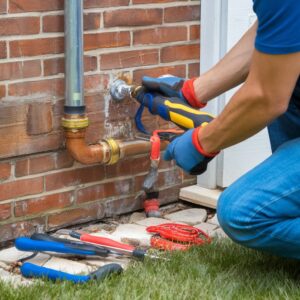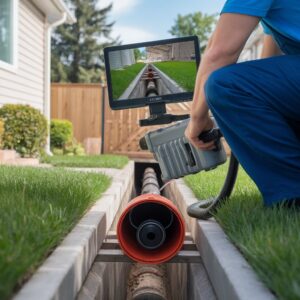An electric heat pump is an essential component for modern climate control, efficiently transferring heat between indoor and outdoor spaces. It operates through a cycle of refrigerant compression and expansion, absorbing external thermal energy and distributing it indoors. This mechanism allows it to consume less energy than traditional systems. The comparison with furnaces and air conditioners reveals distinct advantages. However, understanding its operation and installation intricacies is important for ideal performance and cost savings.
Key Takeaways
- Electric heat pumps transfer heat between indoor and outdoor environments for both heating and cooling, using refrigerants for efficient heat transfer.
- They operate by moving heat rather than generating it, making them energy-efficient compared to traditional heating systems.
- Air-source heat pumps extract heat from external air, reversing the refrigeration cycle for cooling during warmer months.
- Essential components include compressors, evaporators, refrigerants, and coils, working together to maintain indoor thermal balance.
- They provide dual functionality for heating and cooling, which reduces energy consumption and operational costs compared to using separate systems.
How Does an Electric Heat Pump Work to Provide Comfort?
An electric heat pump functions by transferring heat between the interior and exterior environments to maintain ideal indoor temperatures, making it a critical component in modern climate control systems.
Heat pumps have been used for decades in residential and commercial settings due to their ability to deliver energy-efficient performance across seasons. In fact, some models can deliver three to five times more heat energy than the electrical energy they consume, depending on the system and conditions.
The efficiency of a heat pump in providing both heating and cooling depends on selecting the appropriate type for a specific climate zone, as different models are designed to operate effectively under varying thermal conditions.
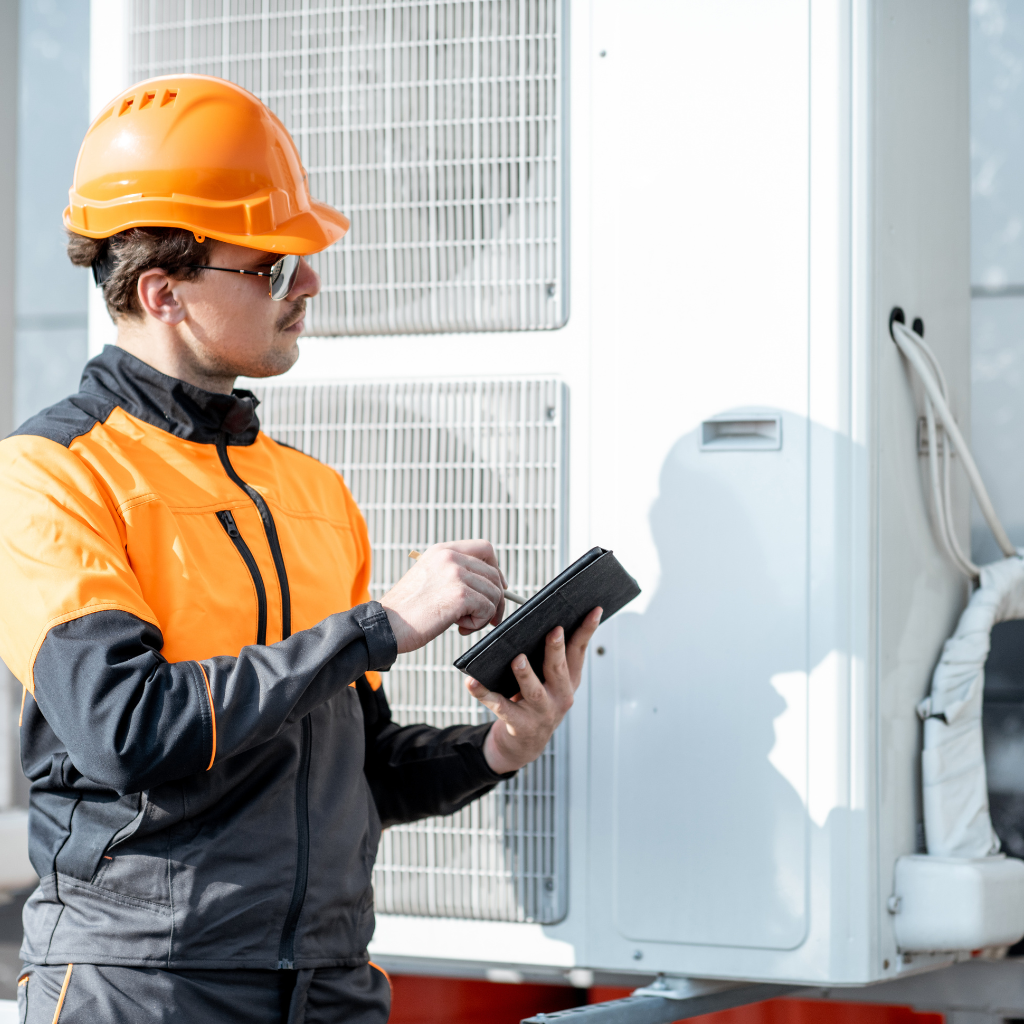
What Type of Heat Pump Is Best for Your Climate Zone?
Selecting the ideal type of heat pump for a specific climate zone involves understanding the operational nuances of electric heat pumps and their capacity to maintain indoor comfort. The choice hinges on the climate zone’s demands:
| Climate Zone | Recommended Heat Pump Type |
|---|---|
| Cold | Cold climate heat pump |
| Moderate | Air-source heat pump |
| Hot | Air-source heat pump |
| Variable | Ground-source heat pump |
| Humid | Ground-source heat pump |
The electric heat pump operates by extracting heat from the air, a process that varies with climate. In colder regions, a cold climate heat pump is ideal for its tailored efficiency. Air-source heat pumps are well-suited for moderate and hot zones due to their adaptability. Ground-source systems offer robust heating and cooling for variable and humid environments, maximizing energy efficiency.
How Does a Heat Pump Provide Heat and Cool Efficiently?
Understanding the interplay between climate zones and heat pump types lays the groundwork for exploring the mechanisms by which electric heat pumps deliver efficient heating and cooling.
Electric heat pumps operate by transferring heat rather than generating it, a process that inherently increases efficiency. In heating mode, air source heat pumps extract ambient heat from outside air and move heat indoors through a heat exchange process. Conversely, during cooling, they reverse this cycle to cool your home by expelling indoor heat.
Ground source heat pumps achieve similar outcomes by utilizing stable subterranean temperatures. Both systems capitalize on the efficient heat transfer capabilities of refrigerants, making them adept at maintaining comfort across diverse climates.
This bidirectional heat movement is central to their operational efficacy.
How Do Heat Pump Systems Work in Real Conditions?
In real-world applications, heat pump systems consist of essential components such as compressors, evaporators, and refrigerants that work together to transfer heat.
Various types of heat pumps are available, including air-source, ground-source, and water-source models, which utilize varying methods to extract and distribute thermal energy.
These systems are most efficient in mild climates where temperature differentials are minimal, allowing for ideal heat exchange processes.
What Are the Components of a Heat Pump System?
A heat pump system comprises several critical components that work synergistically to transfer heat efficiently. At its core, the heat pump utilizes electricity to power a compressor, which circulates refrigerant between indoor and outdoor units.
The components of a heat pump include the evaporator coil, condenser coil, expansion valve, and compressor. As air-source heat pumps extract heat from the outside air, the refrigerant absorbs this thermal energy at the heat exchange surface.
Subsequently, heat is transferred indoors via the condenser coil. This process allows the system to move heat from one location to another, achieving significant energy savings.
Each component is integral to the heat pump system’s ability to maintain thermal balance and operate efficiently across varying environmental conditions.
How Do Different Types of Heat Pumps Operate?
Building upon the fundamental components of a heat pump system, examining how different types operate in real conditions offers deeper insights into their functionality.
Air-source heat pumps, for instance, utilize external air to transfer heat, effectively heating or cooling a home by reversing the refrigeration cycle. This type of heat pump operates efficiently in moderate climates.
Ground-source, or geothermal heat pumps, leverage stable underground temperatures for heat exchange, providing consistent performance regardless of ambient conditions.
Additionally, air-to-water heat pumps transfer heat to a water-based system, suitable for radiant floor heating.
Each type of electric heat pump depends on specific environmental factors, dictating how heat pump systems work best. Understanding these operational mechanisms is essential for optimizing how they heat and cool your home.
Why Do Heat Pump Systems Work Best in Mild Climates?
Heat pump systems excel in mild climates due to their reliance on external temperatures to facilitate efficient heat transfer.
An air-source heat pump uses electricity to transfer heat from outside, effectively moving heat from one place to another. In mild climates, the outside air maintains temperatures conducive to ideal operation, allowing the system to absorb and release heat with minimal energy use.
When outside temperatures are moderate, these pumps function efficiently, as less energy is required to extract heat from the environment. As a result, air-source heat pumps work best in such climates, providing an effective solution for heating and cooling.
In contrast, extreme temperatures challenge the system’s ability to maintain efficiency, increasing energy consumption and reducing performance.
What Is an Air-Source Heat Pump and How Does It Operate?
An air-source heat pump functions by transferring heat between the interior of a building and the outside air, operating effectively throughout various seasonal conditions. These systems can also heat your home efficiently, even when outdoor temperatures drop significantly.
Different types, such as ductless mini-split and central air-source systems, provide options for various installation needs and efficiency requirements. Other options include ground source heat pumps, which extract heat from the earth rather than the air and are particularly effective in colder climates.
The mechanism by which these systems extract heat involves a refrigeration cycle that absorbs heat from the external air and transfers it indoors, maintaining comfortable temperatures with impressive energy efficiency.
How Do Air-Source Heat Pumps Work Through the Year?
How exactly do air-source heat pumps maintain their efficiency throughout the changing seasons? An electric heat pump, specifically air-source heat pumps, functions by extracting heat from the outside air, even in varying temperatures.
This device can heat or cool a building. During colder months, the heat pump is a device that moves heat from the cool outdoors into the interior, utilizing available heat energy. Conversely, in warmer months, the systems work to transfer interior heat to the outside, providing efficient heating and cooling year-round.
What Types of Air-Source Heat Pumps Are Available?
When examining the various types of air-source heat pumps available, it becomes essential to understand their operational mechanisms and applications.
The most common type of heat pump is the air-to-air heat pump, which efficiently moves heat from the cool outdoors using electricity to transfer heat rather than generate it directly. This type of heat pump works like a refrigerator in reverse, where heat is used to warm indoor spaces by extracting heat from the cool air outside.
The heat pumps transfer heat effectively, offering an energy-efficient alternative for heating and cooling. Different types of air-source heat pumps cater to varying efficiency needs and climate conditions, optimizing performance by utilizing the ambient air temperature, ensuring an adaptable solution for diverse environmental settings.
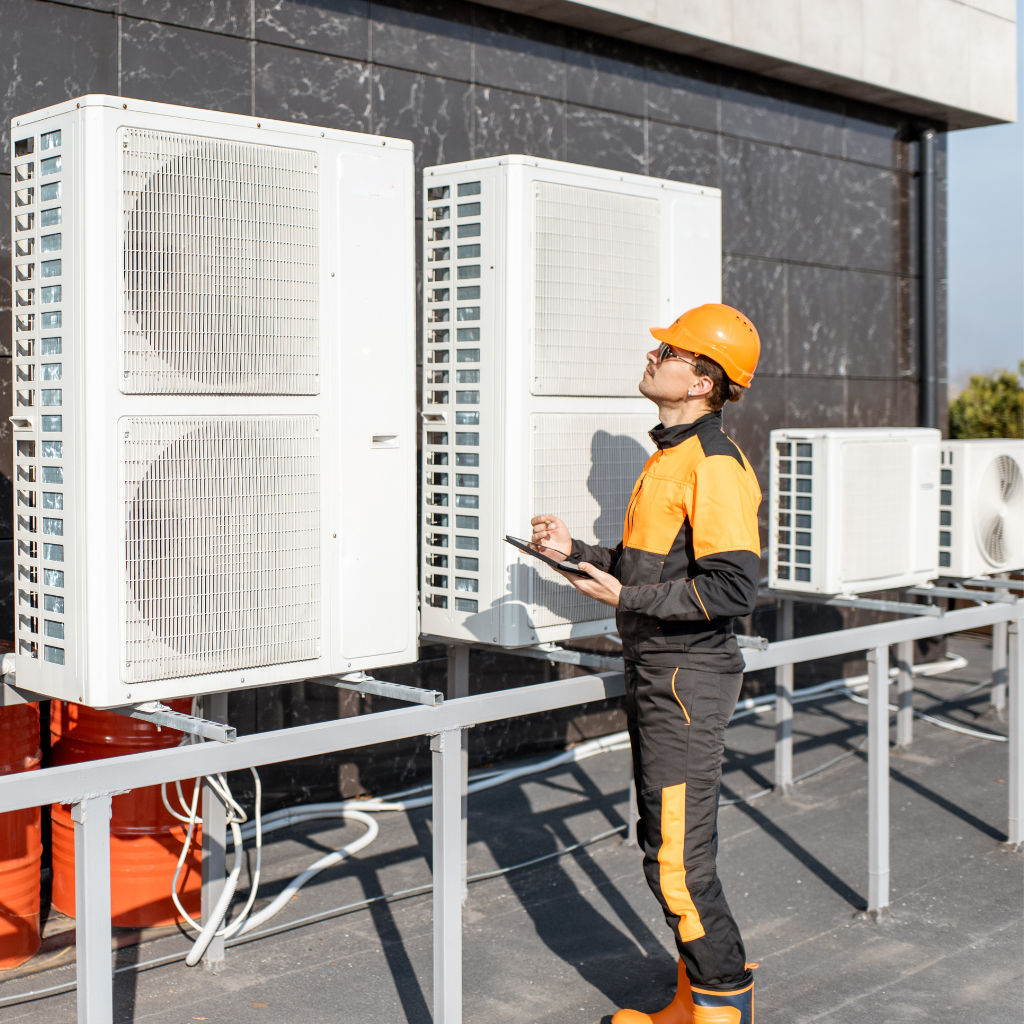
How Does an Air Source Heat Pump Pull Heat from Outside?
Understanding the mechanism by which an air-source heat pump extracts heat from the outside environment provides insights into its operational efficiency.
An air-source heat pump functions by utilizing refrigerant cycles to pull heat from outside air, even in cold climate heat conditions. The system operates by absorbing thermal energy from the outside air, using it as a heat source. This energy is then moved indoors through the heat system.
In reverse mode, the air conditioning function moves heat from one area to another, effectively cooling indoor spaces. Heat pumps move heat by compressing and expanding refrigerants in a closed loop, enabling efficient heat transfer.
This method allows the extraction of latent heat, even when external temperatures are low, enhancing energy efficiency.
How Does a Heat Pump Differ from a Furnace or Air Conditioner?
When comparing heat pumps to traditional furnaces and air conditioners, several key distinctions arise.
Heat pumps are used as versatile systems that offer dual functionality by providing both heating and cooling, thereby integrating seamlessly into an all-encompassing climate control system. One major advantage is that part of the heat pump cycle involves reversing the refrigeration process to switch between heating and cooling modes, offering year-round comfort.
Additionally, their energy efficiency often surpasses that of furnaces, making them an attractive option for reducing energy consumption and operational costs.
Why Opt for a Heat Pump Instead of a Traditional Furnace?
Choosing a heat pump over a traditional furnace involves analyzing several critical factors, including energy efficiency, cost-effectiveness, and environmental impact.
Unlike a furnace, which generates heat by burning fuel or using electric heat, a heat pump works by transferring heat from one place to another. This mechanism allows the heat pump’s system to provide heat to your home more efficiently, as it relies on moving existing heat rather than generating heat from scratch.
According to the Department of Energy, this can result in considerably lower energy consumption and reduced utility bills.
In addition, by utilizing ambient heat sources, heat pumps contribute to a lower carbon footprint, making them a more sustainable choice compared to traditional furnaces reliant on fossil fuels.
What Makes a Heat Pump Better Than an Air Conditioner?
How exactly does a heat pump distinguish itself from an air conditioner, and what advantages does it hold? A heat pump uses a mechanism that allows it to create heat, making it capable of both heating and cooling. Unlike an air conditioner, which only transfers heat from indoors to outside, a heat pump provides dual functionality.
Heat pumps are effective because they utilize heat from one source (outdoors or the ground) and redistribute it.
Here are the key benefits:
- Dual Functionality: Heat pumps can either heat or cool a space, integrating two systems into one.
- Energy Efficiency: By transferring heat rather than generating it, they consume less energy than traditional systems.
- Versatility: A system with a heat pump can extract heat from the ground, enhancing efficiency year-round.
Can a Heat Pump Be Part of a Heating and Cooling System?
Curiously, heat pumps can indeed be integrated into an all-encompassing heating and cooling system, offering distinct advantages over traditional furnaces and air conditioners.
An electric heat pump uses electricity to extract heat from the outside air, even in cold conditions, providing efficient residential heat. Unlike conventional systems that rely on combustion, heat pumps transfer thermal energy, thereby reducing emissions and energy consumption.
Heat pump installation can seamlessly combine a heat pump with existing systems, enhancing versatility. Different types of heat pumps, such as air-source or ground-source, cater to varied climates and needs.
As the future of heat evolves, the heat pump may become a cornerstone in sustainable heating and cooling solutions, offering an adaptable and efficient alternative to traditional methods.
What Should You Know Before Heat Pump Installation?
Before installing an electric heat pump, it is crucial to evaluate the spatial requirements, as adequate clearance is necessary for peak performance and maintenance access.
Additionally, understanding the energy efficiency features of modern heat pump systems, such as variable speed compressors and advanced refrigerants, can considerably impact long-term operational costs.
Analyzing these factors prior to installation guarantees both an efficient setup and sustained energy savings.
How Much Space Does a Heat Pump Installation Require?
To guarantee ideal performance and efficiency, the spatial requirements for a heat pump installation must be carefully assessed. The electric heat pump, whether air-source or ground source, demands precise spatial evaluations to work efficiently.
For ground source heat pumps, the outside area is vital; it must allow enough space to extract thermal energy effectively from the ground. Factors to take into account include:
- Installation Space: Confirm adequate room is available for the heat pump’s components, both inside and outside the home.
- Ground Loop Area: Ground source systems require substantial space for ground loops, which are essential for efficient operation.
- Accessibility: Sufficient access for maintenance and repairs enhances long-term system performance.
Each of these spatial elements impacts the overall efficacy and functionality of a heat pump system.
What Makes a Heat Pump System Energy Efficient Today?
What factors contribute to the energy efficiency of a heat pump system in today’s advanced technological landscape?
An electric heat pump is designed to be energy efficient by extracting heat from the outside environment to heat your home. This process uses electricity more effectively than traditional heating methods.
Ground source heat pumps, a specific type of heat pump, capitalize on stable underground temperatures, further enhancing efficiency. The amount of heat needed is minimized by using heat strips only when necessary, ensuring an efficient system.
The efficiency of these systems relies on their ability to deliver more energy than they consume, making them a viable option in modern energy-conscious applications. Selecting the appropriate type of heat pump is essential in optimizing energy use.
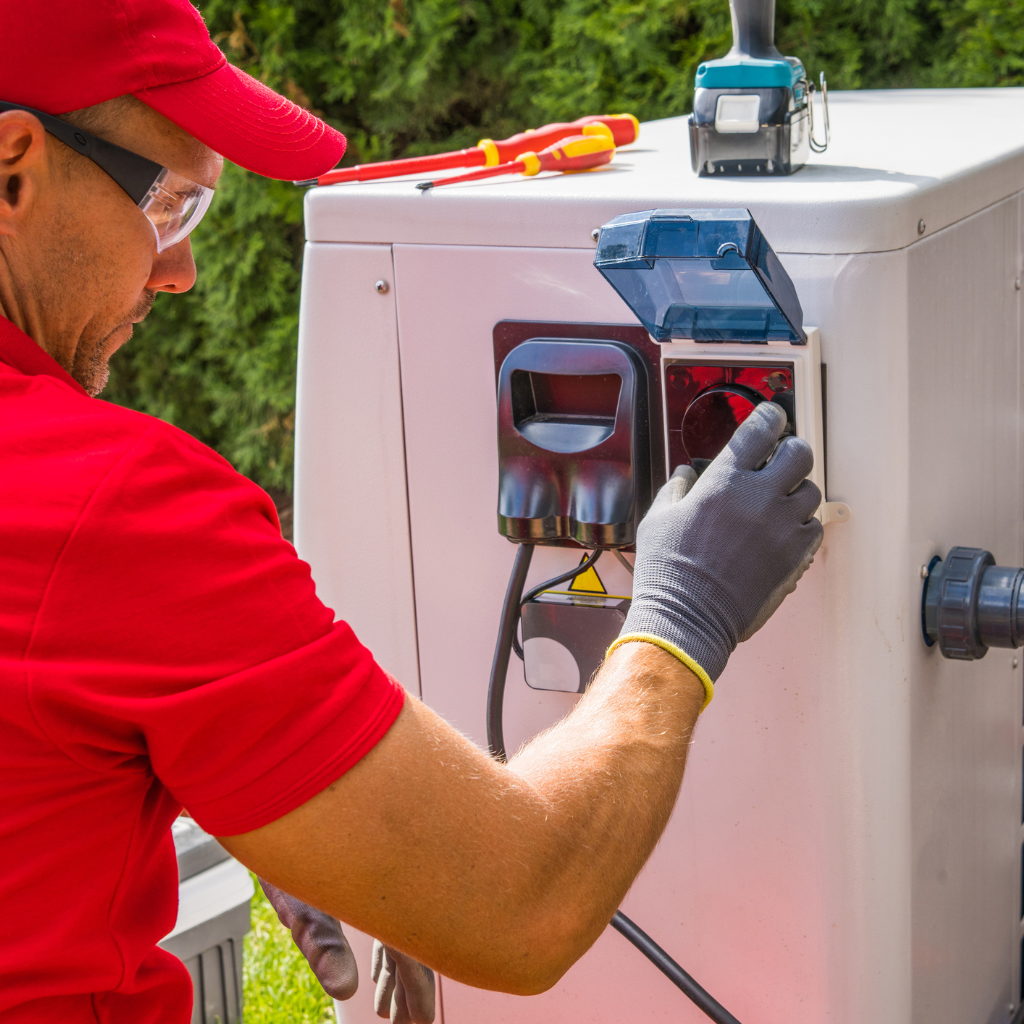
Conclusion
In summary, electric heat pumps utilize advanced thermodynamic principles to efficiently transfer thermal energy, providing both heating and cooling with minimal energy consumption. By leveraging refrigerants in a continuous cycle of compression and expansion, these systems effectively manage indoor climates while reducing environmental impact. Compared to traditional furnaces and air conditioners, heat pumps offer a more sustainable and cost-effective solution. Prospective users should consider factors such as climate, installation costs, and system compatibility to guarantee peak performance and long-term benefits.


